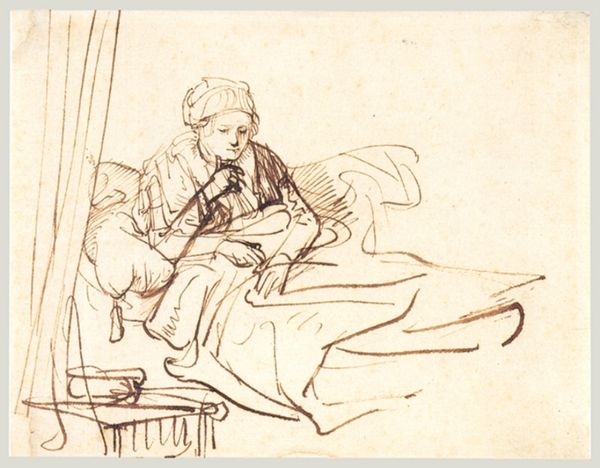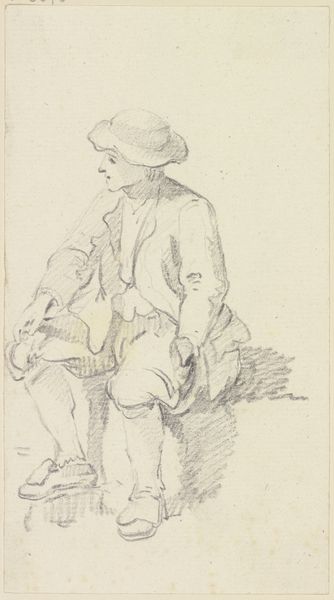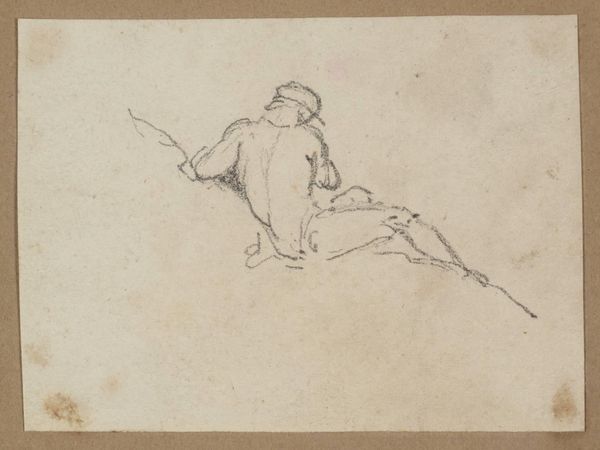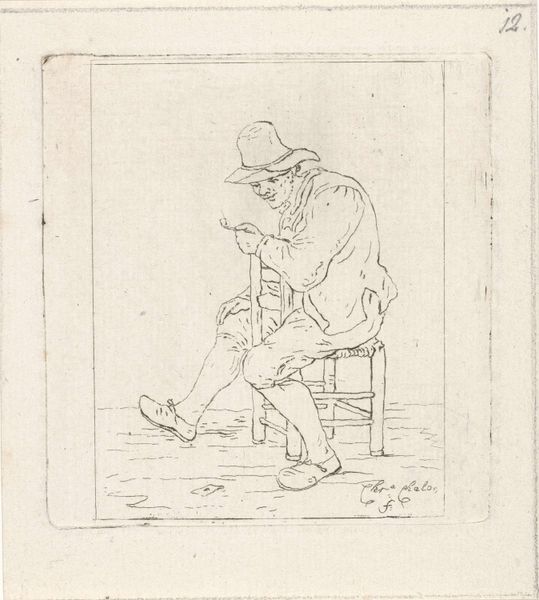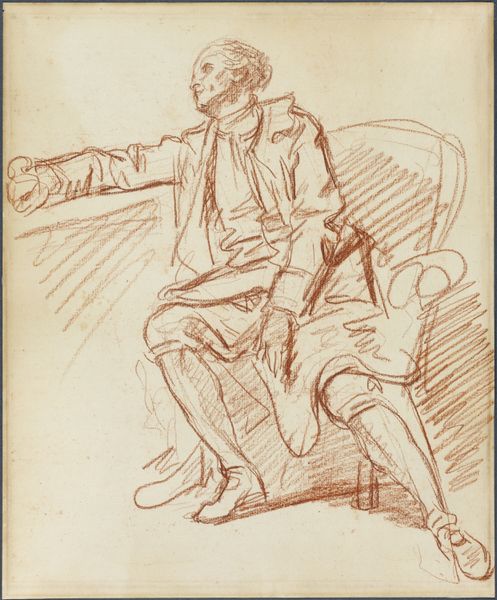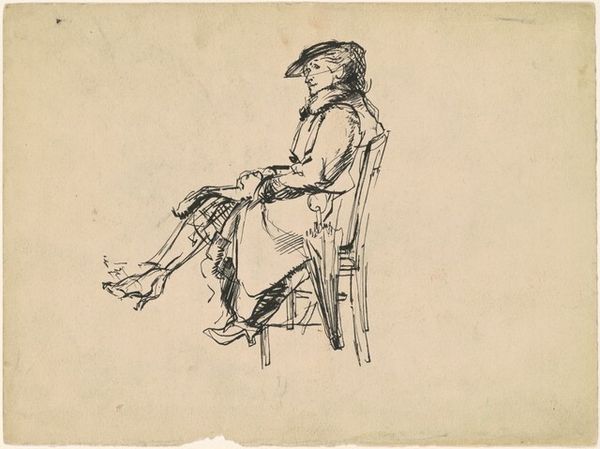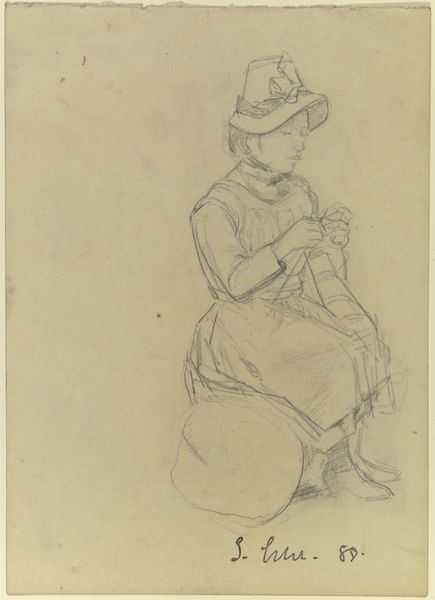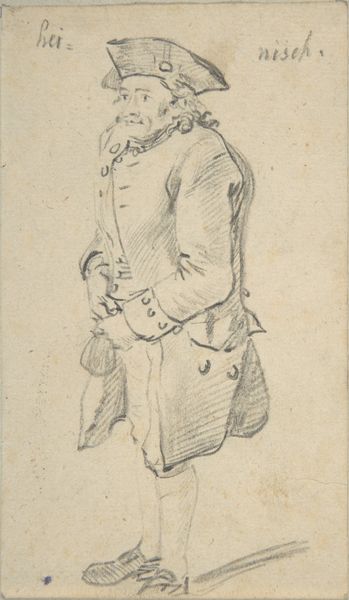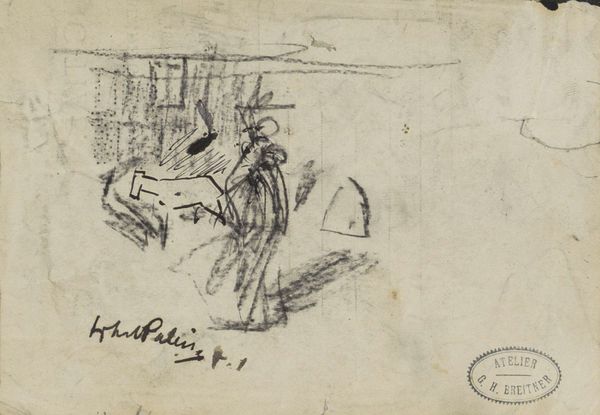
Rakkeren til hest når han samler de døde katte af gaderne 1797
0:00
0:00
drawing
#
portrait
#
drawing
#
figuration
#
romanticism
#
line
#
genre-painting
Dimensions: 116 mm (height) x 200 mm (width) (bladmaal)
Curator: Look at the subject! Abildgaard's 1797 drawing, titled "Rakkeren til hest når han samler de døde katte af gaderne", pulls us directly into the grim reality of 18th-century street cleaning. Editor: The immediate feeling is one of starkness. The monochrome drawing emphasizes the subject's isolation, though I find the horse's vague form slightly off-putting compositionally. The light paper lends a delicate touch to such a potentially macabre subject. Curator: Observe how Abildgaard renders the "rakker"—the municipal sanitation worker—and the tools of their trade. The lines aren't just descriptive; they denote social standing and the harsh labor conditions of the time. The drawing itself becomes a record of social structure. Editor: From a purely formal perspective, the sketch relies heavily on line. See how economical the strokes are? The hat, the coat, the suggestion of the horse… Abildgaard captures the scene's essence with the most essential marks. Curator: I’m more interested in the societal implications. What did it mean to represent this individual? This wasn’t some heroic figure, but rather someone on the lowest rung. Depicting such work speaks to shifting cultural interests, right? Editor: Absolutely, and his mastery shines in the contrasts. Note the clean, deliberate lines detailing the man's garb, and then, observe how they give way to the horse's fainter, unresolved contours. It generates a striking, subtle discord. Curator: True, but consider the broader market and how prints of drawings such as this one would be distributed. It is a method to portray urban existence at that time. What do you reckon about the reception of these representations of labor at this moment? Editor: That adds another dimension, it really shows how art objects function to express particular historical periods, to go past visual appearances and get a wider understanding. Well, the visual simplicity draws me in, however. A deceptively bare piece concealing multiple nuances.
Comments
No comments
Be the first to comment and join the conversation on the ultimate creative platform.
